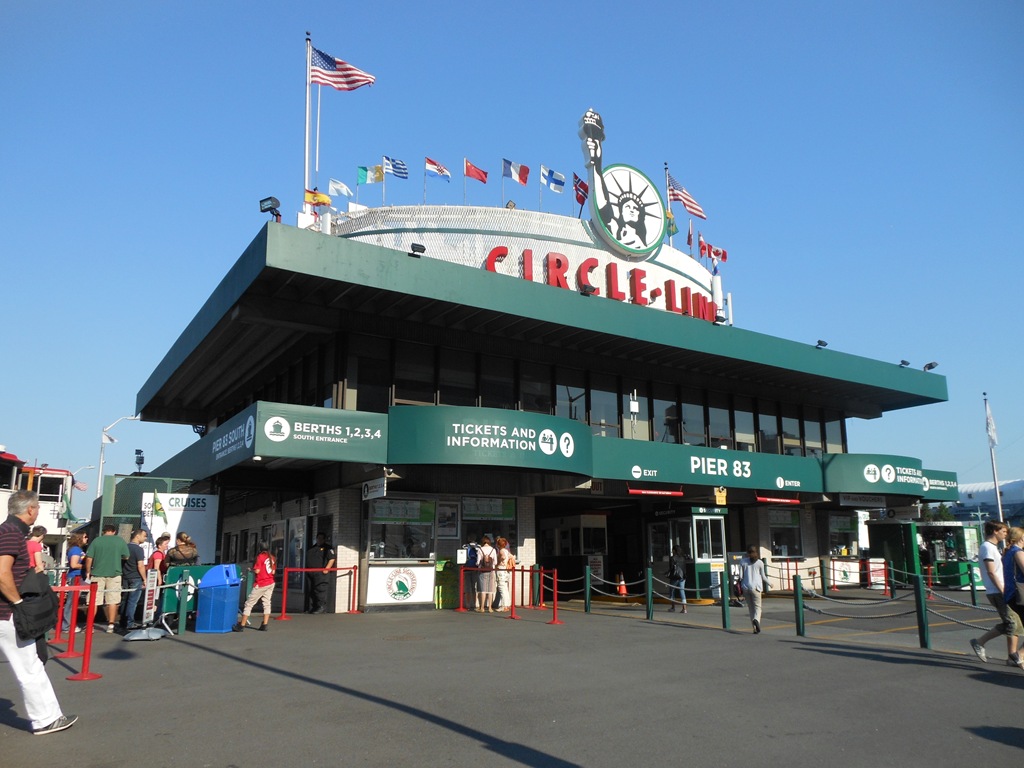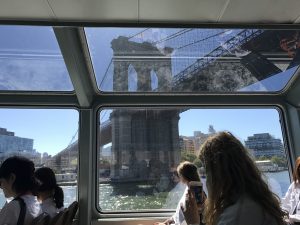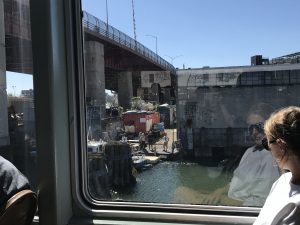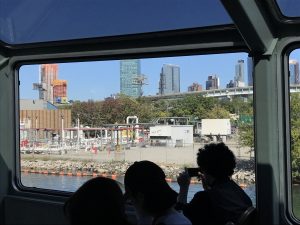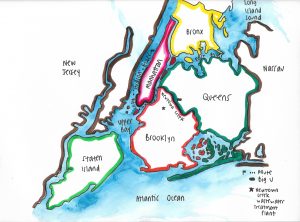Watch “Long Life Video” and answer questions.
1) How would you describe Nagaoka’s “non-designing” design practices?
In my opinion, Nagaoka’s “non-designing” design practices are based most of all on the functionality of the design rather than the aesthetics and the form of it. In this way, all of the long life designs are based on the traditional and functional designs people used back then, for example, the designs made in 1960’s in Japan after WWII. Long life designs are meant to enrich people’s lives with well-designed products that are made with honest materials, meaning that can be used over and over again like the school desks turned into photo frames and mirrors. In this way, “non-designing” design practices means to take designs from the roots, like traditional designs to create something functional that can mean something to people.
2) How do your opinions of “good” design compare with Nagaoka’s? Would you define good design differently, how so?
My opinion of good design is very similar to Nagaoka’s philosophy but without leaving beside the aspect of uniqueness, innovation, and creativity. Certainly, for me, good design is something that shapes people living in some way. For example, the design of the credit card, back in the 50’s, made easier trading, buying and spending money. For this reason, I do believe that the most important and yet an essential aspect of designs is the functionality and the materials you use. Also, I think is important to look back into traditional designs that have been produced for over 50 years because those are a perfect example of good design because of the way functionality played a role in it. However, as designers, I believe that is important to also create products that show your identity, your philosophy and most of all, that impact the world in a positive way. That is when basing our ideas based on tradition, meet innovation and creativeness in order to represent our identity and impacting the world to make a stand on our philosophy. So, for me, a good design is inspiring and learning from traditional designs in order to create, design and innovate for the present with our minds and vision of the future. For this reason, for me, tradition is not old and unfashionable but is the pure base of design and function.
3) Nagaoka says that we have entered a new era where people want to buy things that mean something to them, that truly matters, and that we have entered a new era. Do you feel these ideas are specific to Japan or are applicable to other countries too? What evidence do you have of your opinion (what makes you say yes or no)?
I believe that idea is applicable worldwide because the phase o epoch we are living is affecting the entire world not only a country. The reason why people are now buying things that mean something to them is that after going through natural phenomena, like earthquakes, floods, storms, among others, is because we found things that matter, that are useful and plays a role in our life. This phase of the world is leading us to reflect on our way of living and the things we do that contribute or counteract the environmental crisis we are living in. For this reason, the new era of reflection and awareness is what is leading to a new form of prosperity which is also our hope of changing or making better the Anthropocene. For this reason, people caring about the materials, the process, where is was made from is a new era of being more aware and making the connection to things that mean something to us because of the role and function it has in our life.
4) What kind of design do you think appeals to young people today?
I think is difficult to define what type of designs appeals to young people nowadays, because the most important thing for young people is to be cool, unique and make a stand no matter what. However, I would say that based on what we are living in, and the importance that is given to living with more consciousness is what is changing that. Because young people are learning the importance of caring what we buy and consume because every single thing will have an impact on the world and therefore, it will impact us as well. In this matter, I believe young people have been born with the epoch in which we are the ones impacting and shaping the world and therefore, we are the ones that need to change that impact to be positive. For this reason, I believe that we as young people, are always attracted to “cool” “new” “novelty” things but now buying and consuming this with more awareness.
5) Near the end of the program, the host of the program says the future of design could be, “people who make things with care and people who use them with care” and that this could be a new form of prosperity. Do you agree? Why?
Yes, I agree with that statement because that is referring to the new epoch we are living in, in which people are starting to care about the way they live, the things they buy and consume. For this reason, people are using things that do care about them, like I said before, as we are living a new era of creating consciousness and reflecting on our lifestyle we are caring more about what we consume and use. Therefore, designers know that people are not only focused on the form of the designs but the functionality it will have on their life and the durability of it. For this reason, that is a new prosperity, in which we are flourishing and enriching our lives with the design but also impacting in a positive way to the world because we now care.
6) What do you think of the student projects shown at the end of the program?
I believe those project truly represent the idea of long life design and followed Nagaoka’s philosophy. The materials they used and the process of making a specific design are what makes the difference from others. For example, the girl that took one year to make a single garment has a different experience as a designer of creating clothes rather than buying a type of fabric and making the design. The approach it has is making a connection of designers with the world and natural resources and I believe this makes a huge difference when designing because your experience changes the way you perceive and live the world, and therefore, the way you design. I thinking taking design like it was taken back in the 60’s is designing with more care, with more respect of the materials and with more awareness of our impact, instead of only designing to make profits.
7) Do you consider yourself a long-life designer? Would you like to become one?
Yes, I do one to become one long life designer in the fashion industry which is the field that is ruled by “trends” and “novelty”. However, if we look back, and learn from designs that have been produced over and over again like jeans, basic t-shirt, we learn that those designs are long life designs because they met and fulfill successfully the reason why they were created and design for. Also, I think that now most designers as Nagaoka said in the video, don’t care who they are selling for and the impact their design will have in the world but only caring about making money. For this reason, I believe that as a designer is important to care, to be aware in order to make something that will mean something to people and therefore, we will create connections and we will be connected to the same cause or reason: to use the designs we make with care.
Design from home country:
2) What is a beautiful object/design that you admire from your home country that has been in production for longer than fifty years? Write a brief description (around a paragraph) about this object’s history on your Learning Portfolio and include an image. Come prepared to present about this object next week, please bring it with you if you can.
The object that I chose that I think represent the culture of Ecuador, especially the coast side where I live are the hammocks. It is made out of cotton fabrics which are also handmade. These beautiful designs have been produced in Ecuador for over hundreds of years, becoming part of the culture and identity of Ecuadorian people. Moreover, the process of making hammocks is one of the main activities on the north side of the country, in Otavalo, in which native indigenous Ecuadorians have been threatening their own textiles for over 4,000 years. This started because they produced clothing for nearby indigenous communities, like “ponchos” and then with the Spanish colonization, it became a commerce and now is one of the leading textile commerce in Latin America.
threating the textile for hammocks
hammocks
Circle Line document.
1) In your field notebooks, DRAW (by hand) A MAP of the Circle Line route (including the five boroughs of New York, two rivers, and our route). Label the Newtown Creek, Wastewater Treatment Plant and the location of the future Big U.
(Click to enlarge map)
2) Answer the following questions:
– Compared to what you saw when walking, what can you see and sense different from the boat?
First, it was different to be on the water instead of walking in concrete which is what I do every day in the city. It gave me a different perspective of the city itself by looking at it from the river and making me realize the relationship of the city with water, as water impact us but we also impact water with our waste and things we consume. When I did the zone walk, I was walking through zones in which were affected by Hurricane Sandy because of the flood it causes. On the other hand, by being on a boat in the river, it made me feel like looking at the city from the perspective of the Hurricane towards the city and affecting the areas near water.
– Does New York seem prepared for sea-level rise?
Now that I have look at it from another perspective, I don’t think people were thinking about the future and possible natural phenomenon when they built buildings so near the water. Because of this, I believe that the “Big U” is essential and important for the city to be prepared for the future to make the city more resilient to the environment. However, I believe once this project is done, it is important to create an evaluation of other possible zones that can be really affected by storms in order to apply the same type of project as the Big U.
– What areas appear to be vulnerable to coastal flooding? Are any effects of Hurricane Sandy visible?
I think the areas that seemed more vulnerable are the ones that are near the water as they are more propense to get flooding with bigger and stronger damages. For this reason, I think is why after studies and evaluation they decided that the project of creating an extra landfill, which is the Big U, is to be applied in the lower part of Manhattan which is the one that appears to be in more danger. When we were going through Newtown Creek in Brooklyn I saw several buildings that were really deteriorated and cracked, most of them really near the water. So, I believe that must have been one of the buildings that got hit by hurricane Sandy and hasn’t been renovated, but now it is abandoned.
– Do you see any evidence of the Big U being constructed?
I didn’t get to see any of the Big U being constructed, however, I did see a part of Manhattan in which there was a green area near the waterline and people were going around in bicycles and walking. I believe that gave me a kind of idea of how the coastline of NYC will look like after 10 years.
– Are you able to determine which areas of the coast are built on a landfill?
I think that at simple sight not really because from the perspective in which I was, it was really hard to determine this.
– Do you see any sea walls, reinforcements or marsh areas?
I didn’t have the chance to see this. But, I saw in Brooklyn there are still areas in which some buildings are being constructed near the water instead of leaving the coastline free from construction and residence buildings and create what now the coastline of Manhattan will be investing on. So I believe is necessary to make changes and even more on buildings like electrical power of ConEdison wich is also near water, residence and important buildings that have to do with the work and system of the city.
– What kind of systems do you see interacting (people, water, boats, etc.)?
I saw interacting people with water, land, transportation such as bicycles, boats, water motorcycles, kayaks, helicopters, cars, among others. People also interacting with air, and transportation affecting air, land, and water.
– How do you think the New York City coastline will change over the next 50 years?
I think the Big U project will be a huge improvement on how NYC was built without resilience to natural phenomenon. On the other hand, by implementing more green areas, it also helps to clean the air the city which so clustered together with so many systems interacting and affecting water, air, and land. In this way, it will not only serve as a protection but also as the air purifier. Also, it makes people interact more in green areas that are not limited with bars like many parks do have, however, is an open area in which people can walk and use bicycles. So, I believe that the coastline of NYC will be stronger, more solid and resilient as it not only serve for one purpose but it can be used as a green place to interact.
